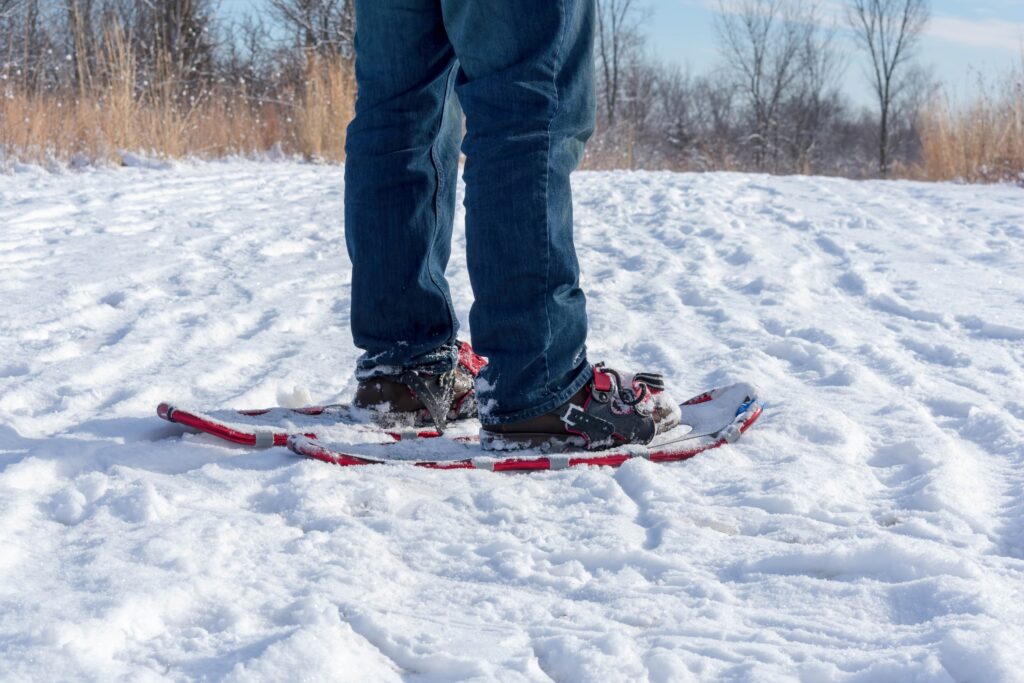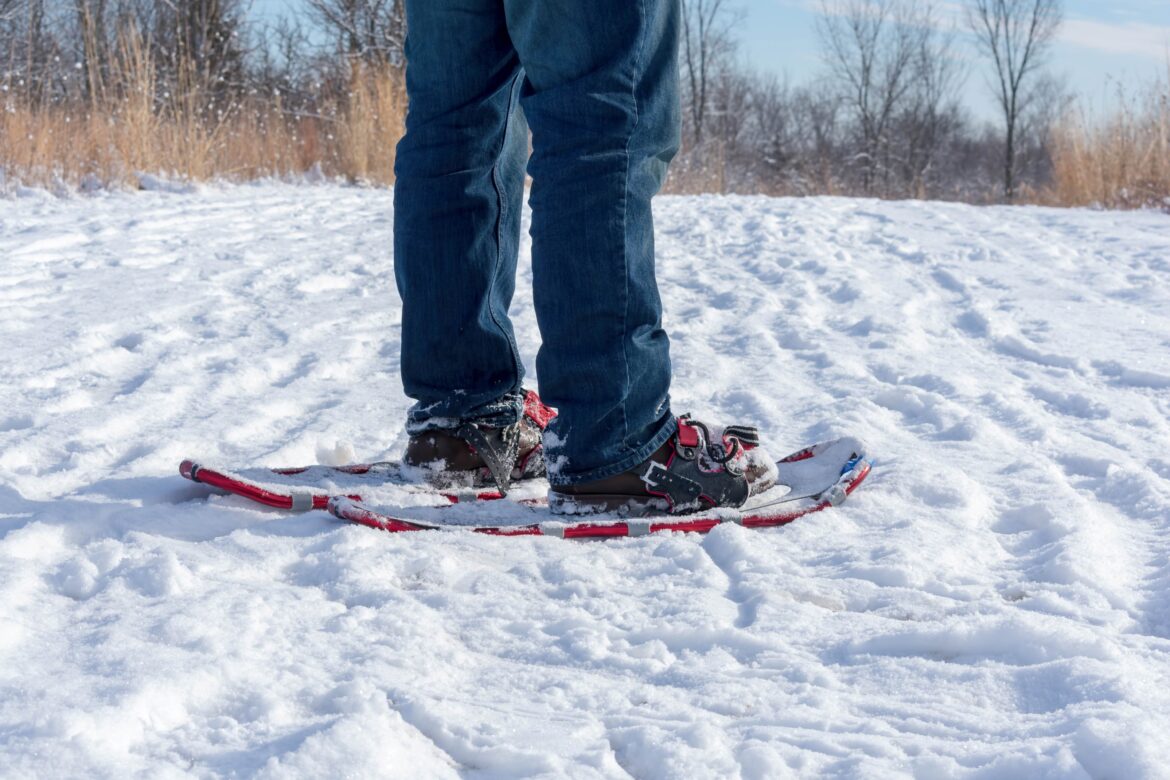
Introduction
Backpacking also happens in winter. It does not end when the snow starts to fall. What it means is that there is extra gear to pack. It’s vital to pack everything you need on a successful snowshoeing tour.
Similar to many other outdoor sports, snowshoeing needs attention to detail. This ensures that your forthcoming trek through nature is enjoyable and innocuous.
You don’t want to be trapped in the cold without the right kit. Your snowshoeing gear checklist can make your next winter adventure memorable or not.
You need to gather the right tools and equipment designed for snowshoeing to cover the basics before you can set out. From high-quality snowshoes and poles to clothing layers and food and drink, there are many things to include on your list.
Are you a bonafide winter hiker? Or new to snowshoeing? It’s crucial to have a solid checklist of supplies and gear for the day. Some main factors determine what you need to pack, including
- Your destination
- How long you’ll be out
- The weather
With this snowshoeing gear checklist guide, you’ll find the tools you need for a memorable snowshoeing escapade. You’ll also learn where you can get high-quality snowshoeing items, including:
- Snowshoes
- Poles
- Clothing layers.
Snowshoes
Snowshoes should be the first items on your checklist as they’re your flotation devices. It doesn’t matter whether you are hiking in backcountry terrain or walking along your flat local trails, the right snowshoe make snow travel more efficient and easier.
You need to get the right snowshoes from one of the leading suppliers like TSL Outdoor. All TSL Outdoor snowshoes are designed to adapt to various terrains and activities. They also offer much-needed traction and flotation in snow.
Additionally, they come with comfortable and secure bindings. You’ll be able to find the right size and model, depending on your weight, the terrain you’ll be in, and the snow conditions as long as you partner with the right snowshoe provider.
Clothing Layers
Your body temperature will fluctuate as you hike or walk on snow. The main goal here is to remain warm. However, it shouldn’t be too warm. You need to take some layers off when you feel you’re getting too hot. The last thing that pro snowshoers want is to sweat in cold weather.
If you’re new to snowshoeing, finding the perfect clothing strategy may take multiple outings to master as you learn the types of layers that work perfectly for you. Check the day’s forecasts to be sure of what to carry with you in terms of clothing. Let’s take a look at the basics of dressing for a memorable winter adventure.
- Ski socks (warm, wicking socks)
- Synthetic or wool bottom and top base layers (Expert Tip: Take an additional top layer to change into if your body sweats a lot. A cold, quick change, and you will be so grateful you achieved it! Bottom and top soft shells for warmer or drier days.
- Mid-insulating layers (micro puffy or fleece
- Bottom and top waterproof layers, perfect for wet forecasts
- Sun hat
- Warm beanie
- Gaiters
- Insulated waterproof mittens or gloves
- Waterproof boots
- Liner gloves for ascending or hiking, plus an extra set to swap out your wet gloves
Trekking Poles
As you float on snow, you need enhanced efficiency and stability, especially on uneven terrain. That is where poles become important.
As they provide you with much-needed stability and efficiency, they allow you to save your precious energy while boosting your safety level. Comfortable pole grips go a step further in terms of long hikes.
The best providers offer various pole models. High-end models usually come with extended foam grips that enable snowshoers to “choke down,” especially when side-hilling in steeper terrain.
Also, top-quality poles come with adjustment locking mechanisms. With these mechanisms, users can tighten the poles’ clamping force on the fly to make sure they remain locked and rock-solid beneath them.
Essentials
Many things can unfold during your snowshoeing adventure. This isn’t meant to prevent you from experiencing the pure fun and magic you will experience while on your snowshoeing tour. It’s always advisable to prepare yourself for any elements of weather. Also, you need to prepare yourself for a bit of bad luck.
Whether it’s a multi-day trek to unknown territory or a short hike of several hours, you need to have some important snowshoeing essentials, including:
- Sun protection (sunglasses, sunscreen, and SPF lip balm)
- Topographic map
- Compass
- Navigation
- Illumination
- First-aid supplies (first-aid kit, hand and toe warmers)
- Repair kit and tools (zip ties, snowshoes repair, and spare straps)
- Hydration and nutrition (water or a hot drink, lunch and snacks, emergency just-in-case food such as energy bars)
- Emergency shelter and communication devices
Where Can You Get High-Quality Equipment for Snowshoeing?
TSL Outdoor is one of the top-rated providers of top-quality snowshoeing equipment. It is a French leader firm specialising in the design and creation of high-quality outdoor equipment, particularly hiking poles and snowshoes.
TSL Outdoor is committed to providing highly innovative outdoor products that come with high quality. With TSL Outdoor snowshoes and hiking poles, you’ll benefit from their adaptability to different terrains and activities as well as optimal flotation and traction in snow.




Comments are closed.